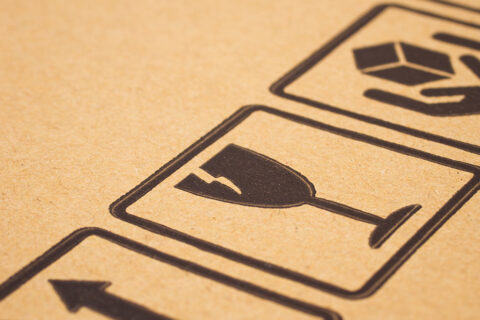However, some of the most important items to care for during the moving process are also the easiest to overlook.
Many important documents, like birth certificates or financial statements, can become damaged or lost if they aren’t prioritized during packing and moving. In this blog, we list six tips that can help you move these records safely and efficiently.
- Create a Document Inventory
For most homeowners, there’s not one single location where important documents are kept. For example, you probably don’t keep your owner’s manuals in the same place as your passport. To ensure that none of your documents are missed, take some time to create a list you can check off as papers are packed.
If the number of individual documents seems overwhelming, consider making a list of places you keep records instead. Take note of any filing cabinets, envelopes, and personal items like purses where you may usually keep documents.
While you create this main inventory, you may also want to note which documents can be packed for transportation and which need to be accessible during the moving process, as we’ll discuss in section six.
- Decide Between Storage and Moving
Before you begin boxing up your documents, consider your options. If you’re moving long distance, you will obviously need to take all your records with you on your moving day.
However, if you’re moving locally or moving over several trips, it may make more sense to store your documents instead of hauling them with your other belongings. Consider opening a safety deposit box with your bank, having a trusted friend or family member hold onto your documents, or renting a document storage unit in these situations.
With storage, you can put the documents in a safe location and collect them once you’re settled to ensure that nothing gets misplaced.
- Find the Right Containers
Regardless of whether you choose to move or store your documents, it’s important to place these papers in an appropriate container. The ideal box will help protect your records from bending, falling prey to pests, or sustaining moisture damage.
For general documents that do not contain sensitive information, an accordion envelope or a portable file box may be the best solution. These containers make it easy to keep your documents organized and in good condition.
For one-of-a-kind and personally identifying documents, consider investing in a lock box or fire safe. Your goal is to keep the papers safe and to control who sees and accesses them during the moving process.
- Properly Dispose of Sensitive Information
As you gather your documents together and begin boxing them up, you will likely find many individual papers that are outdated or obsolete. It’s wise to get rid of these records since boxes containing paper products can become heavy quickly.
Just be sure to check if these documents contain sensitive information such as your birthdate, social security number, or account number for a financial institution or utility company. Disposing of these papers in a traditional way could lead to identity theft, so instead, shred them to obscure your personal information.
- Make Backup Copies
As you cull your paper records, you may also want to create backup copies. Ideally, you should focus on digital copies of your essential records instead of hard copies to reduce the amount of overall space necessary to transport these documents.
Scan in or photograph your documents to create a virtual copy. As you work with digital versions of your records, take the same level of safety precautions as you would for a hard copy. Do not store copies of sensitive documents, especially birth certificates and social security cards, on unsecured electronic devices.
- Set Aside Documents You’ll Need During the Process
You may need to access some of your personal documents during the move. For example, it wouldn’t make sense to pack up your driver’s license if you’ll be driving your family vehicle to your new home or planning to pick up your items from a moving company that will ask for ID.
Additionally, any paperwork relating to movers, storage facilities, new home utilities, or new home lease should be kept with you and accessible. Consider creating a binder or putting together a single folder to hold these items that you can keep in your luggage or purse as you travel.
Follow these guidelines to ensure that your most important paperwork is intact and accessible when you arrive at your new home.
If you need professional insight into how to better protect your documents during a move, consult with Bekins Van Lines, Inc. We offer packing, moving, and even moving coordinator services that can help you prepare for the most difficult portions of any relocation. Request a moving estimate!
